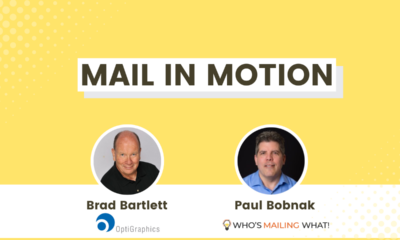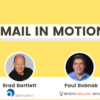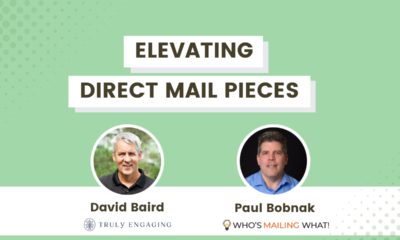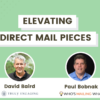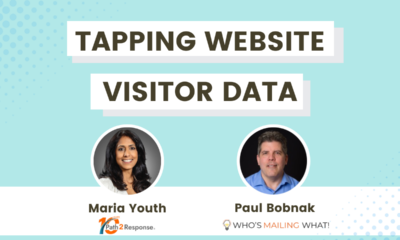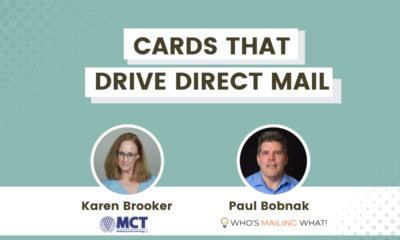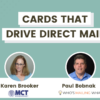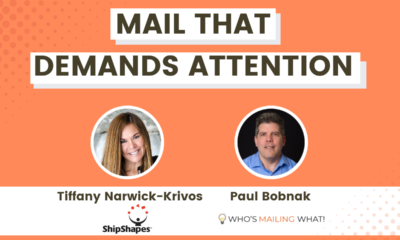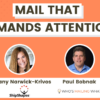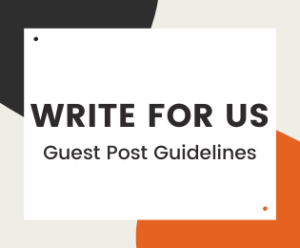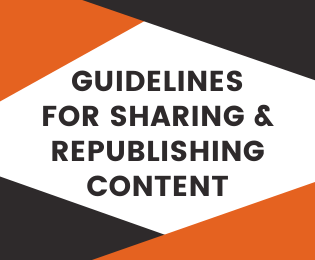MEET THE MAILERS
Meet the Mailers: Integrating Direct Mail and Digital Marketing
In this episode, I talked with SeQuel Response about the evolution of direct mail in recent years, testing essentials, and tracking campaign performance across channels.
In this episode, I talked with Erik Koenig, President and Chief Strategist of SeQuel Response and Chris Hofmann, VP of Digital Services. SeQuel Response is a direct response marketing agency that helps businesses accelerate their growth with “front-to-back” direct mail services as well as digital services.
Much of our discussion centered on the evolution of direct mail in recent years. To succeed now and moving forward, direct mail should include a fourth component in a well-known, tried-and-true formula:
We’re of the opinion that in 2022 digital integration is an absolute, fundamental element of direct mail today.
 Erik Koenig President & Chief Strategist
Erik Koenig President & Chief Strategist
SeQuel Response
These are just a few of the other topics we covered:
- Their respective backgrounds in direct mail (in business development and insurance/health/education marketing respectively)
- What services the company offers
- Testing essentials for direct mail
- Tracking campaign performance across channels
- The future of direct mail
Here are some questions and answers (edited for clarity and space):
- What’s been driving interest in direct mail from marketers in recent years?
Erik: I think that from my view the value prop for mail is relatively unchanged.
The same as it’s always been, it’s a very effective and predictable channel, there’s high ROI potential, there’s high scale potential. But I do think that there’s been a number of dynamics that had brought mail into more marketers’ purview than there ever was, ones who previously disregarded, or ignored it.
That’s certainly something we’ve experienced at SeQuel and it really adapted our agency to support. So in the early days we were, of course, working a lot with tried and true … insurance and financial companies, those that had premiums and annuities and things like that because that’s who was heavily in mail.
… But when you get outside of insurance and financial that’s once again a pillar. And so that created more value for us, helped us be more successful. So we felt like we were onto something and we got increasingly good at identifying which brands really should be mailing based on a variety of factors.
And our prospect pool exploded, which really put us in a good position for the DTC boom… pretty easy to do that five years ago through the advents of Facebook and the like. But also all of the funding and private capital investments in these companies.
Convincing prospects to mail for the first time was a challenge. But eventually, we got good at figuring out the key inflection points that someone might be good for mail and when would be the right time to entertain mail …These digitally native brands, or at least the majority of them have started to have some ceiling of growth coming, whether looming are already there from the Facebook, and Google paid search, and shopping, and even influencer marketing.
They were looking to diversify really out of necessity. So they’re starting to look a little bit more upper-funnel: mail, TV, radio, out of home and in the mail, they found and still do find a lot of similar benefits to what they liked about digital: from a targeting perspective, comparable, if not better; from analytics and tracking perspective, comparable, if not better.
And so they kind of fell into a channel and learned of the channel’s basic core use case, about being a cost-effective way, in a scalable way, in a predictable way to acquire new customers.
Chris: Clearly digital always changes, but the changes that have been occurring over the last couple of years and particularly in the last year have been enormous. [Y]ou started seeing stories a few years ago about a lot of these direct-to-consumer brands starting to sour on Facebook advertising, starting to look to diversify their media mix as there was a lot of changes happening. There used to be third-party data that was integrated into Facebook, and as a result of the 2016 election stuff that had happened, Facebook pulled that data out and that had an effect of weakening Facebook’s look-alike models. And then, of course, last year the hammer blow really came when Apple started enforcing their ATT privacy framework with the iOS 14.5 Plus rollout, which of course is where you have to opt-in to tracking not only on Facebook, but on any app on the iPhone.
And so brands have learned that and they’re having to naturally diversify their mix. And it’s not just Facebook, right? I mean, this affected every social app that’s out there, it’s not that they can just turn to Snapchat or Twitter or whatever other social channel to have that prospecting return.
And of course, the other issue is the third-party cookie blocking. It’s already occurring with Safari, with Firefox, and soon to be with Chrome. So the foundations of digital marketing have been shaken and continue to shake. So we are in this sort of in-between period where people are trying to figure out what to do.
And as brands start to look at traditional channels, there’s really no other channel out there that has the precision and scale that direct mail has in terms of reaching prospects at the top of the funnel.
- Testing is obviously an important discipline for direct marketers. What is essential for marketers to do or to know about testing?
Erik: Well, I think it is an important discipline. I’d argue probably the most important discipline … that’s a mindset we have.
And you know, when we think about testing here, especially in mail, we talk a lot about the direct marketers’ dilemma (I think it’s probably our term, so I’ll define it). You know, the more we test, the better our odds of success, right? The more lists, offers, creatives, price points, channels, what have you, but also the greater the expense, the greater the risk, the longer it takes.
So that creates this no free moves environment. We’re always making trade-offs … testing in direct mail is high stakes. It’s not digital where we can have an A/B test in the morning, winner by noon, positive … Mail is something that is that when it’s out there, you can’t pull it back … It’s very important to be very intentional about how you’re going to go about testing.
So for us, when we started SeQuel, we wanted to have a methodology we could call upon. And we’re big believers in taking as many trips to the plate as we can get, so really bang for the buck. We want to maximize our probability of success with testing a lot of lists, offers, creatives, and digital simultaneously.
[W]e need to be strategic on which of this broader testbed we’re going to actually populate with mail volume. So for us, we populate a subset of the broader testbed we want results on, and we mail, let’s say, maybe 8 cells out of a testbed of 36 potential combinations. And we mail those 8 cells and we read those 8 cells and we use the results. We see there to index and project the unpopulated combinations. And then ultimately what we get from that is a heat map of winners and losers.I think regardless of the methodology, I think the essential pieces for any direct marketer are to do it right. Don’t become complacent, you gotta maintain a testing mindset. Have a roadmap of initiatives across all the variables: list, offers, creative, digital. They should all have hypotheses and rationales, estimated impacts. And then, Be intentional. So do it with purpose, be consistent, and allocate based on the potential impact. You should have a mix of bunts, singles, doubles, triples, home runs. It shouldn’t be all of one or all of the other and again, just stick with it.
- When it comes to prospecting campaigns, what would you say is the most important element for success?
Erik: [T]he most important element is probably the client understanding their metrics. … understanding their AOVs (average order values) or their lifetime values. And based on that understanding, knowing what CPA or cost per acquisition tolerance they have. For us, for companies that are launching mail, one of the constant conversations that I have is that I want to know what their tolerance is, not what they’re achieving somewhere else … we’re not trying to steal a dollar from another channel. We’re trying to justify another dollar be spent.
And again, a lot of the companies we work with being growth-oriented – that’s what they care about mostly about … I think having a realistic timeline for achieving whatever that goal metric is, especially in a launch scenario, you know, to be understanding of the rounds of testing it will take to get to that point.
So I think that’s the most important element. I would say [that] the most important variable is data or targeting list audience. [T]here’s the old adage, the 40-40-20 rule … 40% of success or failure in that formula [is] from the data, 40% offer, 20% creative presentation. We believe it still kind of holds, but …we think data’s 70%+ of success or failure these days.
So one example, it’s probably a silly and certainly an exaggerated one, but I like to think about an example where we give a decent offer with a pretty poor executed creative to a golfer for a dozen golf balls, it’s got a shot at selling a dozen golf balls.
But if we’ve got a buy 1, get 10 dozen free golf ball offer, and it’s the most beautiful creative you’ve ever seen, we spend beaucoup bucks on it. And it goes to someone who doesn’t golf, it’s dead on arrival. So again, it’s an exaggerated example, but I think the point is sound and that’s why we test data more than anything else.
We want to be truly agnostic and we want to have models we test and vertical files and trigger files. We want to build models with several different companies, compilers, with the demographics and psychographics, cooperative databases with that plus purchase behavior. We want to build multiple models per company. We even – with one company in the same monotype – we can build standard lookalikes, best customer models, LTV models, etc. You get out what you put in from a targeting perspective in this channel.
- What does digital integration mean in today’s marketing picture?
Chris: I think Eric mentioned the metaphor of the three-legged stool and said there was a fourth leg. So it’s really bolstering that direct mail performance, that fourth leg, but importantly, it’s also another lever for testing … And certainly, today with Informed Delivery that’s something that we talk about digital integration, that’s kind of a no-brainer, you absolutely want to do the Informed Delivery and execute on that.
But, you know, we’re taking it further and the brand name of what our integration strategy is we call it “Surround”. And what that’s really all about is it’s about activating this data, these records … these models that we’ve been building in a digital channel and hitting as many people as we can that we can match on those records with a digital impression before they received the mail and while that mail is in-home.
And so what’s really important there, as a starting point, foundationally, is a really strong identity graph, so we can bring that data … into a demand-side platform and have confidence that the people we’re serving impressions to are actually the people that are receiving mail because the way we look at it in the context of an integrated campaign, anybody we serve an impression to that isn’t receiving mail is a really a wasted impression, because again, this is truly an integrated approach that we’re trying to reach here.
We know we have the advantage of knowing when that mail is going to get in- home, so we know when to launch these campaigns, with a level of precision. So we’re starting to prime people with digital impressions before that mail comes in-home, again, with the goal to assist the conversion on that long-form, tactile creative, otherwise known as the direct mail piece.
A lot of times … I’ll refer to the direct mail is kind of sending somebody a landing page, a tangible landing page. And that’s really what digital integration is trying to do.
What we do is we’ll start with display, with a rich media HTML5 creative, that’s integrated with the direct mail piece. And then as a campaign matures, we will layer in additional channels: it can be web video, native, connected TV, OTT, it can even be … programmatic audio.
So those are areas we can test and add to a campaign and measure the impact of those as well … having this type of approach as that we’ve seen over several years, we’ve tested digital versus digital direct mail versus direct mail only we’ve seen consistent lifts [of] about, about 15[%], 18%.
And actually, when you back that out to our match and reach rates, it’s actually double that in terms of those lifts because we can’t certainly … we can’t match everybody in that digital space, can’t hit everybody with an impression, so there’s a real consistent impact, so we definitely know that it helps and we continue to test additional channels to further bolster the performance of the direct mail integration.
- What about the future of the direct mail industry as a whole? How do you see direct mail evolving?
Erik: [A] lot of what we talked about today is honestly us preparing ourselves for what we believe the future of direct response to be. And that’s a very prospect-centered, prospect-focused marketing strategy. You know, one where the most important thing is developing this audience that we’re all ultimately confident are the best people to hear about this product or service or hear from this client.
And then the channel becomes less relevant. And it’s not to say we’re moving away from mail. We still fully believe mail to be not only an anchor, if not the anchor to a broader strategy. We just know that while a lot of these things are still relatively siloed within agencies and even, within the clients, you know, TV agencies, radio agencies, digital agencies, DM agencies … the delivery mechanism for all of these things is becoming increasingly online and increasingly programmatic … we’re really gonna move a little bit away from campaign-to-campaign and mail plus a little digital integration to a more holistic view of “these are our prospects”.
And beyond that, you know, again, just more belief in the fact that if we can’t afford to send someone another mail piece in a four-month stretch of time or a six-month stretch of time, that doesn’t mean we can’t afford to send them some of these other advertisements. And so again, it moves a little bit away from campaign-to-campaign thinking and more about an evergreen strategy where there’s a lot of channels at play and we’re trying to stay in front of these people at all times, because at any point in time might be the right time.
Chris: [W]e’re just inundated with advertising – all of us … what we really want to do is we want to achieve a level of resonance with prospects with our campaigns, where there’s a situation where I think we’ve all experienced that at one time or another, when we see an ad that actually resonates with a need or desire that we have. And foundational to that is because someone’s done some – not chance – it’s because someone’s done some very good work on the backend with data to put us into a targeting pool, they know something about us.
And even in this environment that we’re in now around increased privacy, we still in the direct mail world, still have a lot of data to build powerful predictive models. And as Eric said, I think the winners are going to be people who are able to take that data, build the best models and deliver effective advertising at the right place at the right time that gets people to respond.
Here is our conversation. We’ve added timecodes for your convenience.
Thank you again, Erik and Chris, for an interesting and informative chat! To learn more about SeQuel Response, visit SeQueldm.com.
Your comments and ideas are very important to us in making your Who’s Mailing What! experience even better for you. Through these engaging talks, we hope you’ll take away practical tips, insights, and stories to inspire and build your own success.
If you have any feedback — or are interested in sharing your expertise with our wide and diverse audience — please reach out to me. I’d love to hear from you!









